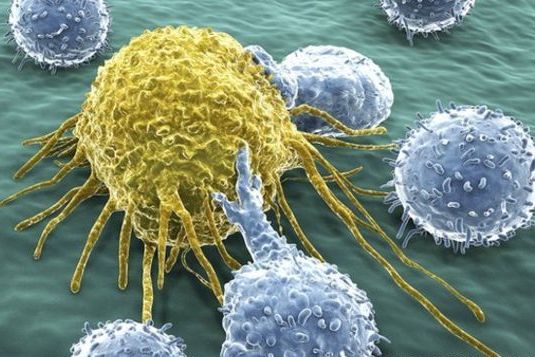 |
| Lymphocytes And Cancer Cell |
The insecticide lindane causes cancer in humans, says the World Health Organization after conducting a review. The insecticide lindane, once widely used in agriculture and to treat human lice and scabies, causes cancer. It has been specifically linked to non-Hodgkin lymphoma, testicular cancer and liver cancer the World Health Organization (WHO) said.
The WHO's International Agency for Research on Cancer (IARC) also said that DDT, or dichlorodiphenyltrichloroethane, probably causes cancer, with scientific evidence linking it to non-Hodgkin's lymphoma (NHL), testicular cancer and liver cancer.
In a review of various agricultural chemicals, IARC's specialist panel said it had decided to classify lindane as "carcinogenic to humans" in Group 1 category, DDT as "probably carcinogenic to humans" in Group 2A class, and the herbicide 2,4-D as "possibly carcinogenic to humans" in Group 2B.
The WHO specialist panel found sufficient evidence to link lindane, already banned in the EU and the US, to a cancer called non-Hodgkin's lymphoma and also to testicular cancer and liver cancer.
Lindane is still used in some developing countries. It is an ingredient in some head lice and scabies treatments used in some countries, including China, India, the US and Canada.
The WHO's International Agency for Research on Cancer (IARC) panel also concluded that another insecticide called DDT, is "probably carcinogenic to humans" and placed in group 2A. It classified the herbicide called 2,4-D as possibly carcinogenic to humans and placed in group 2B.
Most uses of DDT have been banned since the 1970s, but the IARC says exposure to DDT still occurs, mainly through diet adding that DDT is still used in insecticides, mainly for malaria control in parts of Africa, although under very strict conditions.
This is because DDT and its breakdown products are highly persistent and can be found in the environment and in animals.
 |
| A Friends of the Earth campaigner protesting against the use of lindane outside the Ministry of Agriculture, Fisheries and Food. Photograph: Fiona Hanson/PA |
Since its introduction in 1945, 2,4-D has been widely used to control weeds in agriculture, forestry, and urban and residential settings. Occupational exposures to 2,4-D can occur during manufacturing and application, and the general population can be exposed through food, water, dust, or residential application, and during spraying, says the IARC.
The Lancet Oncology journal has a summary of the full evaluation.
Dr Kurt Straif, Head of the IARC said the evidence on lindane and cancer was largely based on studies among agricultural workers that showed a consistent, approximately 50% increase in risk, with higher risks in heavily exposed agricultural workers.
"The agricultural usage of Lindane has been severely restricted starting in the 1970s and current general population exposure is mainly through the diet or when treated for scabies or lice. There are currently no epidemiological studies to quantify the lymphoma risk from these exposures."















No comments:
Post a Comment